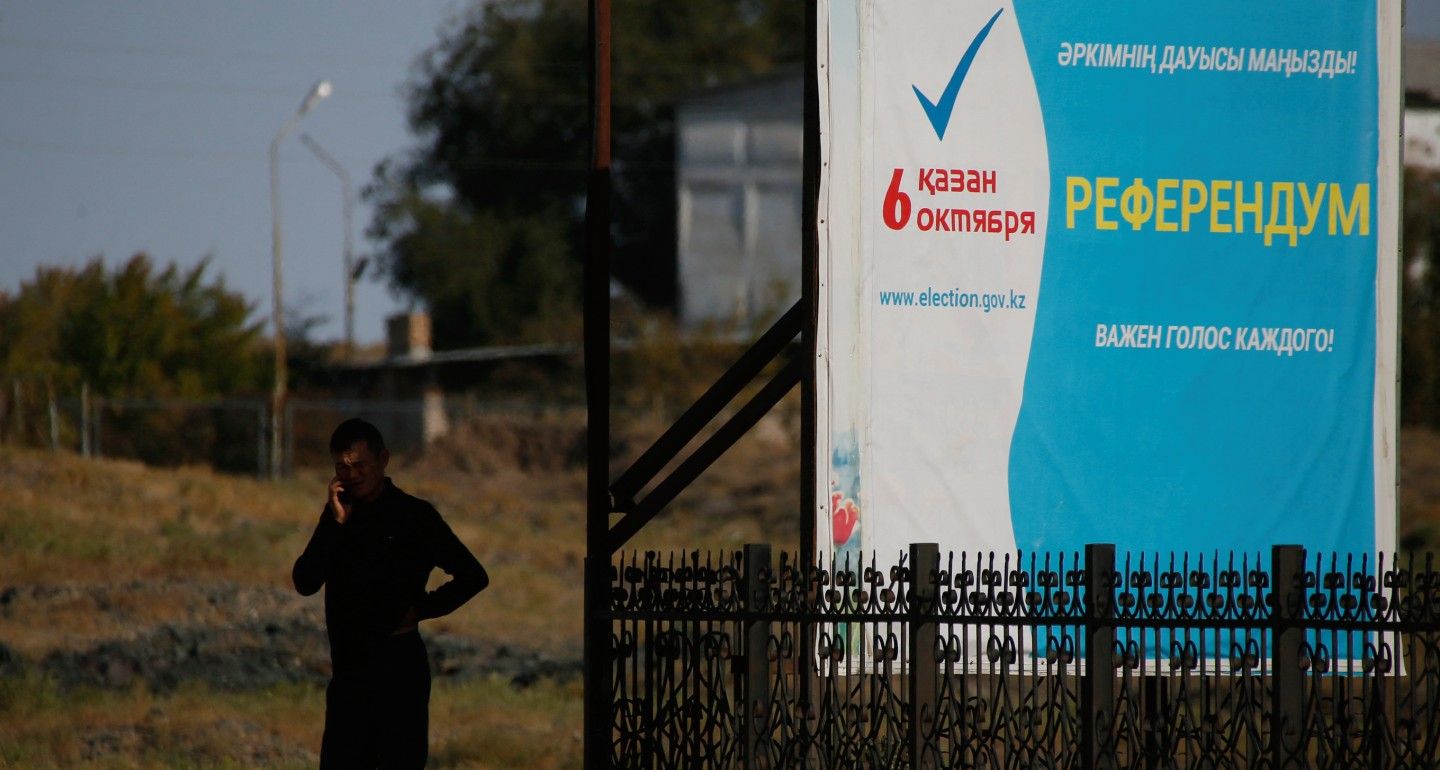More than 70 percent of Kazakhs have voted in favor of construction of a new nuclear power plant at a tightly controlled referendum on October 6. The government’s decision to put this issue to a national vote highlights its controversial nature: only three referendums have been held in the history of post-Soviet Kazakhstan.
Despite being the world’s leading producer of natural uranium (responsible for 43 percent of global production in 2022), Kazakhstan is traditionally cautious about nuclear power. The hesitation stems in no small part from the country’s history as the Soviet Union’s nuclear testing ground: Kazakhstan’s Semipalatinsk region endured over 450 nuclear tests that caused innumerable health problems for locals and badly impacted environmental diversity. Today, some still lack confidence in the government’s ability to guarantee nuclear safety. Concerns persist over potential corruption, regulatory failures, excessive foreign debt, and dependence on other countries for critical infrastructure.
Nevertheless, public opinion is at best peripheral to Astana’s actual decisionmaking. For Kazakhstan, the real question when it comes to nuclear power has almost always been that of “how” rather than “whether.” In fact, ever since 1997, when Energy Minister Vladimir Shkolnik proposed the construction of a nuclear power plant, successive national energy strategies have formalized that ambition. Banal obstacles like a lack of financing and unfavorable terms of intellectual property transfer have been far more significant than public opposition in blocking the government’s previous nuclear power development initiatives.
The real challenge is balancing technical considerations and commercial interests against the delicate geopolitics of supply, especially when choosing between reactor vendors in Russia, China, France, and South Korea. Astana will also need to negotiate favorable terms for financing and localization.
On the one hand, there are grounds for the Kazakh opposition’s fear that Russia might impose a civil nuclear deal that enmeshes Kazakhstan’s energy sector in long-term financial, technological, and supply dependence. Russia has a history of wielding its opaque influence to guard against the subversion of its interests in Kazakhstan’s nuclear sector, as demonstrated by the 2009 arrest of Mukhtar Dzhakishev, then head of Kazakhstan’s state nuclear company Kazatomprom. And Russian state nuclear firm Rosatom, which has previously been Kazakhstan’s default partner for nuclear projects, still controls a large share of Kazakhstan’s uranium reserves.
That said, nuclear power development in Kazakhstan should not be portrayed purely as a Russian financial and geopolitical trap. In fact, Kazakhstan has more agency today than at any previous point in negotiations. After all, the countries that have been shortlisted for participation depend on Kazakhstan for their own uranium. Thanks to French technology transfer and Chinese investment, Kazakhstan is now able to produce fuel assemblies for pressurized water reactors of both French and Chinese designs, effectively precluding (in the scenario that French or Chinese technology is selected) the type of supply vulnerability that European operators of Russian-designed VVER reactors have faced in recent years.
As for financing, Kazakhstan’s sovereign wealth fund is sufficiently well-endowed to provide 30 percent of a nuclear project’s investment, and foreign loans are increasingly available. The world’s leading financial institutions recently pledged to support the expansion of nuclear power worldwide. Even Western governments have re-embraced a strategic view of civil nuclear exports, offering billions of dollars in loans to sweeten deals with their national vendors.
Nor is dependence an inevitable outcome if Russian technology is selected. Rosatom’s nuclear export schemes are varied and flexible, ranging from build-own-operate to mere design and nuclear component manufacturing. Dependence dynamics will be shaped by the negotiated terms of supply. Indeed, the turbines and control systems for a number of Rosatom’s overseas civil nuclear projects are Western-supplied under arrangements that have proven resilient in the face of geopolitical turbulence. Meanwhile, China has imported eight Russian-designed VVER reactors while managing to avoid significant financial, technological, and supply dependence. Much credit here is due to China’s strategy of localization that has seen domestic firms take 70 percent of the equipment manufacturing contracts (reducing payments to Russia by two-thirds). And the localization of fuel fabrication in China via Russian technology transfer—negotiated as part of the bilateral deal—all but eliminated the vulnerability of supply.
While Kazakhstan may not (yet) possess the industrial capacity to implement full-fledged localization, it has sufficient bargaining power to demand favorable terms when it comes to technology transfer—most feasibly in fuel fabrication—and to ensure diversity of financing and supply.
The more important long-term question is whether Kazakhstan will have the capacity and resolve to integrate itself into the global civil nuclear supply chain, for which a civil nuclear power project might serve as a first step. Such an ambition is not unrealistic. Kazakhstan boasts a competent nuclear research complex, which is already engaged in nuclear power R&D through foreign contracts. It has also sought to partner with Russia to develop, construct, and market small modular reactors (the joint venture was terminated by disagreements over intellectual property, not by Kazakhstan’s lack of competence).
Ultimately, whether or not Kazakhstan can move up the global nuclear supply chain will depend on strategic decisionmaking, not on public opinion inside the country. A new nuclear power plant will mitigate Kazakhstan’s energy deficit, but it will not last forever. Ultimately, only meaningful localization and indigenous capacity building can truly foster a nuclear-powered future.





